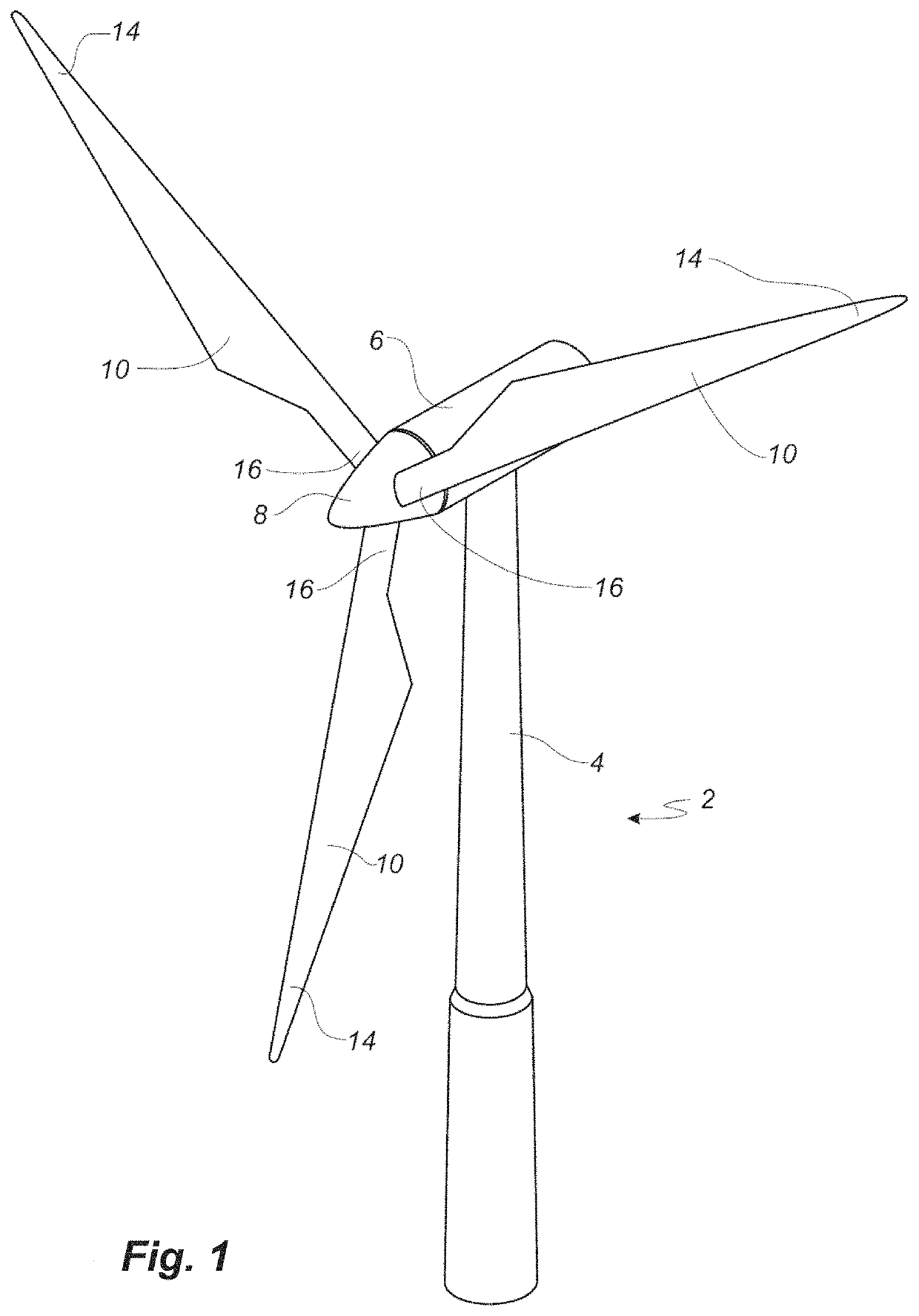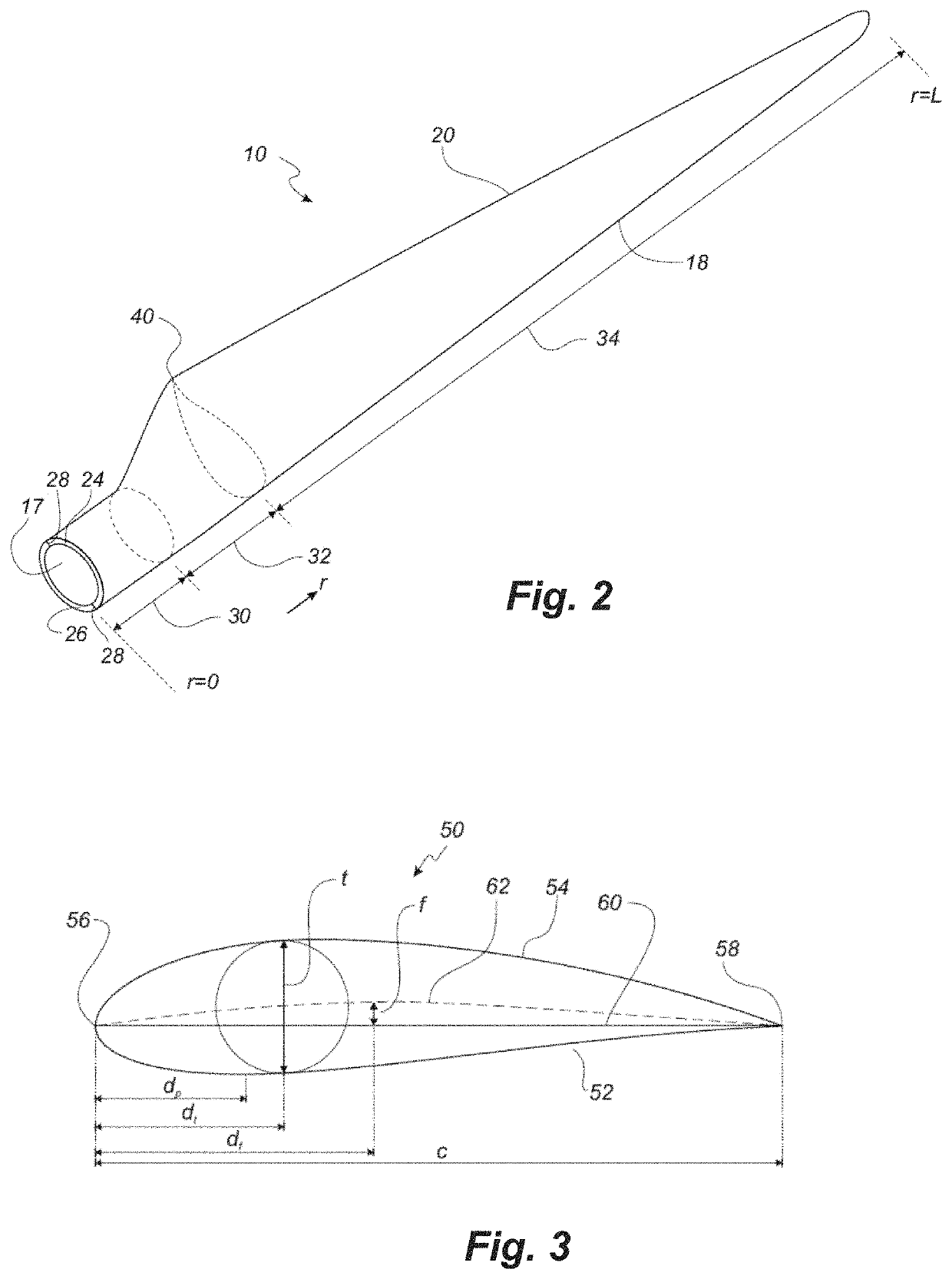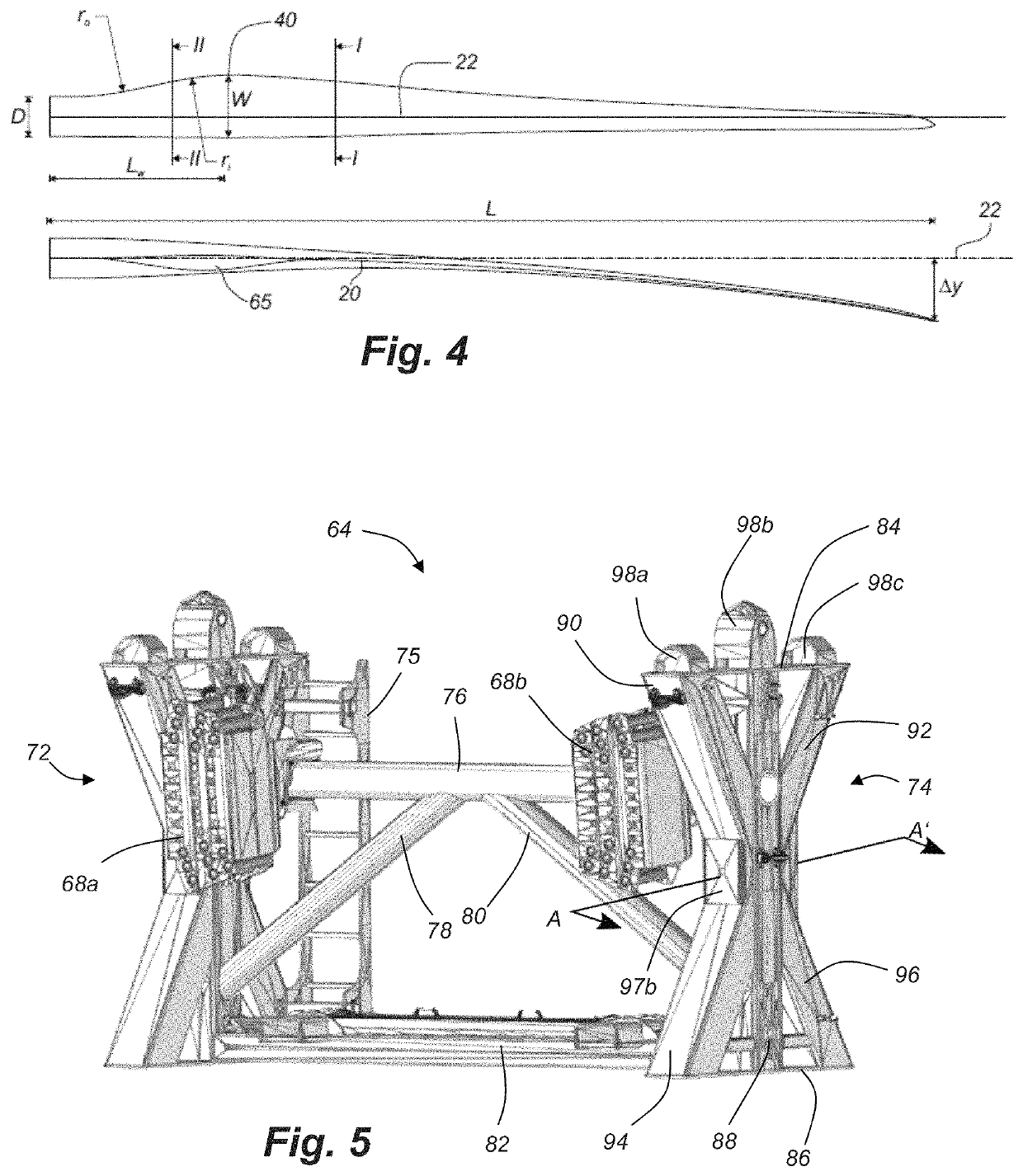Transportation and storage system for a wind turbine blade
a technology of wind turbine blades and storage systems, which is applied in the direction of wind turbines, mechanical equipment, machines/engines, etc., can solve the problems of affecting the service life of the blade, so as to prevent the surface scratching of the blade. , the effect of convenient us
- Summary
- Abstract
- Description
- Claims
- Application Information
AI Technical Summary
Benefits of technology
Problems solved by technology
Method used
Image
Examples
Embodiment Construction
[0045]The invention is explained in detail below with reference to embodiments shown in the drawings, in which
[0046]FIG. 1 shows a wind turbine,
[0047]FIG. 2 shows a schematic view of a wind turbine blade,
[0048]FIG. 3 shows a schematic view of an airfoil profile through section I-I of FIG. 4,
[0049]FIG. 4 shows a schematic view of the wind turbine blade, seen from above and from the side,
[0050]FIG. 5 shows a perspective view of a root frame assembly according to the present invention,
[0051]FIG. 6 shows another perspective view of a root frame assembly according to the present invention,
[0052]FIG. 7 is a sectional view along the line A-A′ in FIG. 5,
[0053]FIG. 8 is a top view of a bottom member of a root frame assembly according to the present invention,
[0054]FIG. 9 is a sectional view along the line B-B′ in FIG. 6,
[0055]FIG. 10 is a perspective view of a root end receptacle according to the present invention, and
[0056]FIG. 11 is a perspective view of another type of root end receptacle...
PUM
 Login to View More
Login to View More Abstract
Description
Claims
Application Information
 Login to View More
Login to View More - R&D
- Intellectual Property
- Life Sciences
- Materials
- Tech Scout
- Unparalleled Data Quality
- Higher Quality Content
- 60% Fewer Hallucinations
Browse by: Latest US Patents, China's latest patents, Technical Efficacy Thesaurus, Application Domain, Technology Topic, Popular Technical Reports.
© 2025 PatSnap. All rights reserved.Legal|Privacy policy|Modern Slavery Act Transparency Statement|Sitemap|About US| Contact US: help@patsnap.com



